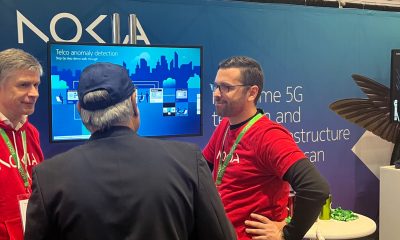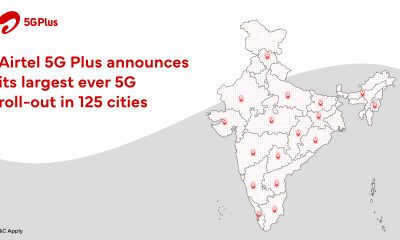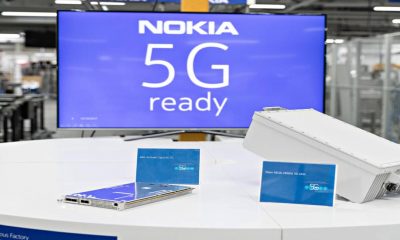5g
C-band is the golden spectrum for 5G
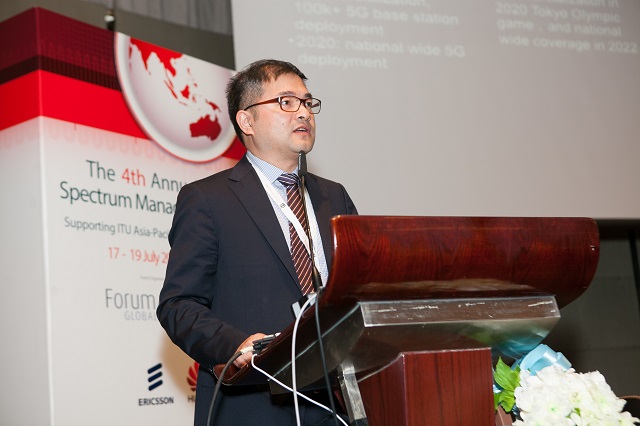

Du Yeqing, Vice President of Huawei 5G Product Line, Delivered the Keynote Speech “C-Band 100MHz/Operator for 5G Business Success”
NEW DELHI: At the Fourth Annual Asia-Pacific Spectrum Management Conference Huawei said that the commercial success of 5G will depend on the availability of continuous large bandwidth (100 MHz per operator).
In a conference keynote, Du Yeqing, Vice President of Huawei’s 5G Product Line said, “C-band is the golden spectrum for 5G. It has been released or will be released for operators in countries worldwide. Continuous large bandwidth (100 MHz per operator) will be the cornerstone for 5G business success.”
He noted that continuous large bandwidth will improve both investment efficiency and user experience by 10 times and promote MBB to new heights, so users can enjoy high quality services anytime and anywhere.
Du said that the current focus of 5G is to coordinate C-band spectrum planning, but that other key technologies and requirements must not be overlooked. For example, uplink-downlink decoupling can reduce the number of sites and associated costs by enabling 5G deployment on existing 2G/3G/4G spectrums and allow continuous coverage on C-band. On top of that, 5G networks require precise synchronization, reduced interference, less spectrum isolation, and higher spectral efficiency.
Countries with insufficient C-band spectrum can allocate 100 MHz of continuous large bandwidth on TDD 2.6/2.3 GHz to each operator. This will improve investment efficiency, while helping to prepare for an evolution towards high bandwidth 5G.
MBB underpinned by spectrum resources is a driving force for GDP growth. Huawei’s 2018 Global Connectivity Index (GCI) indicates that countries prioritizing the construction of ICT infrastructure enjoy substantial economic benefits. It is estimated that by 2025, the digital economy will account for a market value of US $6.4 trillion.
Huawei was one of the organizers of this year’s Asia-Pacific Spectrum Management Conference, which was hosted by Forum Global, the International Telecommunication Union (ITU), and the Asia-Pacific Telecommunity (APT), was held in Bangkok from July 17 to July 19. The purpose of annual conference is to provide a forum for government regulators, telcos, telecoms equipment makers and other industry stakeholders to come together to discuss how to best promote spectrum allocation and formulate a clear set of industry policies.
Topics discussed included how to expedite new LTE spectrum allocation in the Asia-Pacific region, and enable the continuous evolution of All Business Connected@LTE in the 5G era. Participants also exchanged views on how to ensure implementation of industry polices for wireless home broadband, rural networks, indoor digitalization, IoT, and the microwave industry. Stakeholders also called for practical 5G spectrum allocation plans and the selection of appropriate technology to maintain sustainable and effective growth of all mobile business in the Asia Pacific region.
Mobile broadband (MBB) is booming whereas spectrum resources are growingly scarce. Huawei, as a world-class provider of ICT infrastructure and intelligent terminals is fully committed to maximizing spectral efficiency by pursuing new and innovative technologies. Such solutions aim to help Asia-Pacific operators in addressing capacity challenges, including SingleRAN Pro based 4T6S, Massive MIMO, site densification, and spectrum evolution. In addition, the introduction of Huawei CloudAIR 2.0 will support flexible demand-based spectrum allocation between GSM, UMTS, LTE, and 5G NR, and increase spectral efficiency.
In terms of spectrum and technology selection and capacity requirements, Asia Pacific operators in Thailand, Sri Lanka, Myanmar, Malaysia, and Indonesia believe that spectrum combination (low frequency, intermediate frequency, and high frequency) is the correct response to 4G and 4.5G coverage/capacity/service layer requirements. This will effectively improve user experience and spur operators’ growth. The solution should prove to be the prevailing method for deploying LTE networks and spectrums in the upcoming 5G era.
5g
MediaTek Catch-up with Tech: Infinix Zero 30 5G with Dimensity 8020 launched

NEW DELHI: Chipset maker MediaTek, which claims to power more than two billion connected devices every year, hosted ‘Catch-up with Tech’ in collaboration with handset brand Infinix on August 28 to share insightful and engaging conversations about the new-age smartphones and innovative technologies powering everyday lives.
The meet-up threw the spotlight on the MediaTek Dimensity Auto, Satellite solutions and Generative AI along with an extensive showcase of newly-launched Infinix Zero 30 5G powered by MediaTek Dimensity 8020, Infinix GT 10 Pro powered by MediaTek Dimensity 8050, and Infinix QLED TV powered by MediaTek.
In terms of specs, the Infinix Zero 30 5G is tailored for young storytellers and creators, featuring the first-ever smartphone to deliver 4K 60fps video recording from its 108 MP OIS rear camera and ultra-high resolution 50MP front camera. The Zero 30 series powered by MediaTek Dimensity 8020 is said to be a game changer for the front camera vlogging experience along with being the slimmest curved AMOLED smartphone in the segment with glass and a vegan leather back panel. It also claims to be one of the most premium-looking devices in the segment.
The event witnessed a panel discussion moderated by Anuj Sidharth, Deputy Director Marketing & Corporate Communications, MediaTek and included expert panelists from Infinix, MediaTek and two renowned professional photographers.
“With the fifth edition of Catch-up with Tech, we aim to bring consumers closer to the technology and enable them to make informed buying decisions based on their diverse needs. In collaboration with Infinix, this meet-up is in-line with MediaTek’s vision of technology democratization and making innovative technology accessible to everyone,” said Anku Jain, Managing Director, MediaTek India. “The MediaTek Dimensity 8020 in Infinix Zero 30 5G brings faster displays, brilliant cameras and ultra-fast performance. Further, MediaTek Imagiq technologies enrich the capture experience by combining dedicated AI, imaging processors and accelerators to provide incredible results,” he added.
Anish Kapoor, CEO, Infinix Mobile India, said, “Featuring India’s first 50MP 4K 60 fps video recording, Infinix Zero 30 5G is primed to redefine smartphone imaging capabilities, setting a new standard for the creators and vlogging enthusiasts. Our collaboration with MediaTek has played a pivotal role in shaping our exceptional smartphone portfolio, and the Zero 30 5G stands as evidence of our unwavering commitment to innovation and delivering unmatched experiences to our users. The display and design of the device represent a leap forward in smartphone technology. As Infinix Zero 30 5G hits the shelves, we are positive that our customers will find this new offering as exhilarating as we do, further empowering creators to capture their story like never before.”
Radhakrishnan Chakyat, a photography evangelist, founder and host of Pixel Viilage, said, “Infinix Zero 30 5G smartphone powered by MediaTek Dimensity 8020 chipset has amazing hardware features, an excellent camera, dual-view video mode and is primed for optimal content creation and saves a tremendous amount of editing time.”
Aarzoo Khurana, a wildlife photographer, said, “Over the last few days, I clicked various pictures and recorded a few videos with the newly-launched Infinix Zero 30 5G powered by MediaTek Dimensity 8020, and the experience has been truly inspiring. Infinix’s smartphone’s OIS feature helps content creators click shake-free pictures and the front camera, which is extremely sharp and detailed, enables content creators to click countless selfies.”
5g
Nokia launches Nokia MEA Mobile Broadband Index confirming 5G drives digital transformation
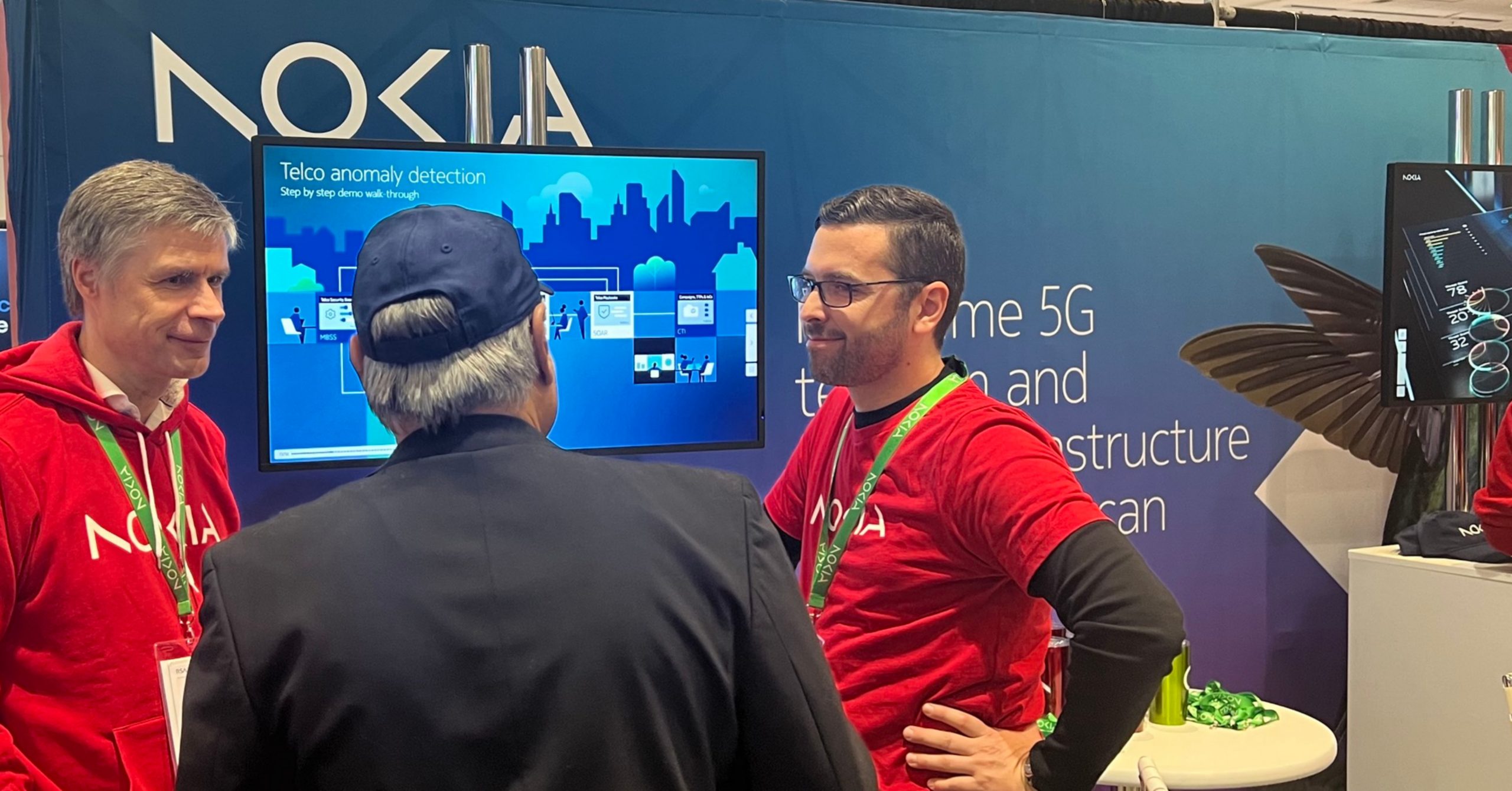
NEW DELHI: Nokia has announced the results of its new research report, the Nokia MEA Mobile Broadband Index, which provides a comprehensive overview of the MEA region’s mobile broadband landscape. The in-depth report highlights the steady growth of 5G in the Middle East and Africa region (MEA) as well as its impact on digital transformation.
It confirms that the Middle East is far ahead of Africa in terms of 5G adoption, while many operators in Africa are still developing their business models around 4G. Voice traffic still relies on 2G and 3G networks in many parts of the region.
5G is forecast to increase steadily and will contribute to the growth of the mobile broadband subscriber base, which is expected to grow with a CAGR of six percent in MEA. According to the report, 4G networks in MEA account for 79 percent of overall data traffic today, and by 2027, 4G and 5G will together account for 90 percent of data traffic. In the same year, 4G subscribers will reach 1,214 million (53 percent of total subscribers) whereas 5G adoption is estimated to reach 380 million subscribers (17 percent of total). Yearly ARPU is estimated to increase at USD$3.4 in 2027, and total data traffic is expected to increase at a CAGR of 32 percent from 2022 to 2027.
The report shows that in the Gulf Cooperation Council (GCC) region, 5G adoption is the fastest, and 5G subscribers are expected to reach 75 percent by 2027, mainly driven by Saudi Arabia. In non-GCC Middle Eastern countries and in Africa, 4G will continue to expand and remain dominant until 2027, while 5G deployment is at nascent stage today and poised to gain more and more momentum over the next years.
As the report confirms, 5G Fixed Wireless Access (FWA) in the GCC countries and 4G FWA in the rest of the MEA region are one of the most attractive use cases, with a significant opportunity for operators to drive incremental revenues. Furthermore, 5G networks are more energy efficient than previous radio network generations, helping operators reach their sustainability targets.
Mikko Lavanti, Head of Mobile Networks at Nokia MEA, said: “MEA is a diverse region with many countries at different stages of development and that is reflected in our report. Data consumption with high-speed networks is increasing exponentially across the MEA market in both urban and rural areas. Reliable 4G and 5G networks are critical for bridging the digital divide in the region, in addition to supporting data-intensive applications for communities and businesses. Nokia is helping both operators and enterprises unlock new opportunities with 5G, building the evolution towards future technologies that will enable enhanced experiences such as the Metaverse.”
5g
Airtel announces its largest ever 5G roll-out in 125 cities
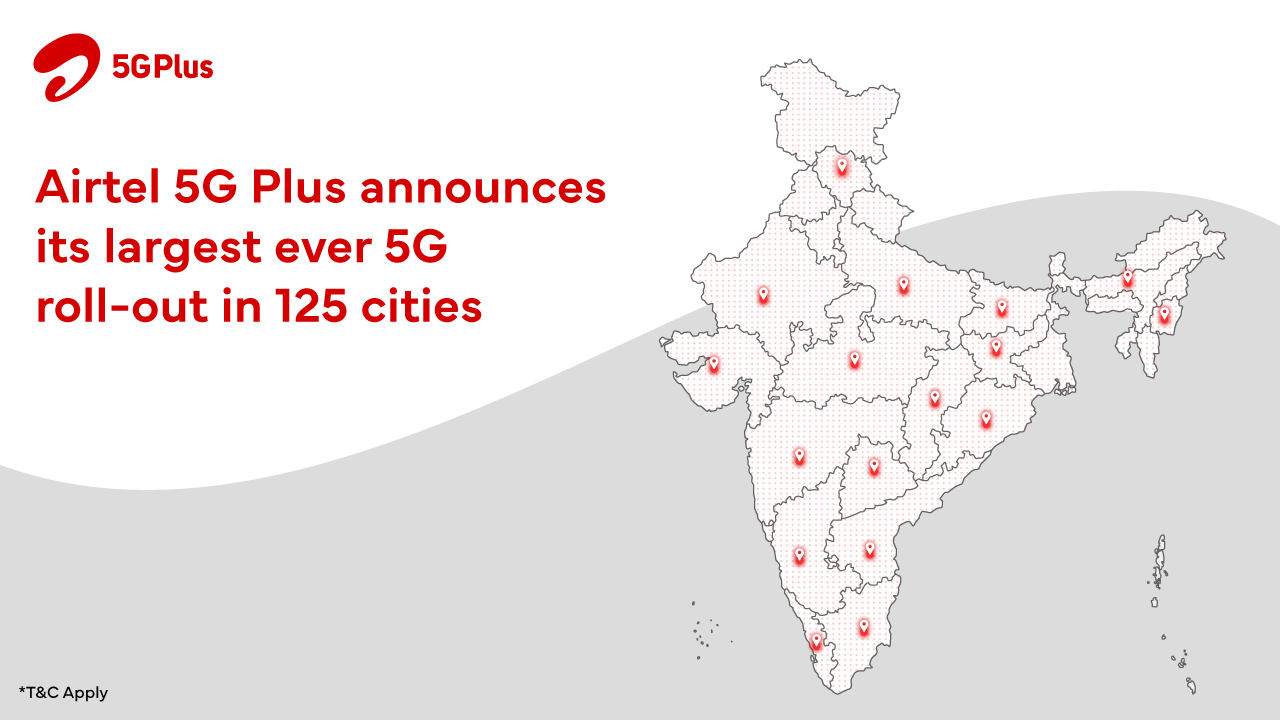
NEW DELHI: Bharti Airtel, India’s telecommunications services provider, today announced the launch of its ultra-fast 5G services in 125 cities. Airtel 5G Plus service is now available to customers in over 265 cities in the country.
Airtel 5G Plus has three compelling advantages for customers. First, it runs on a technology that has the widest acceptance in the world with the most developed ecosystem. This ensures that all 5G smartphones in India seamlessly work on the Airtel network. Second, the company promises to deliver the best experience – between 20 to 30 times higher speeds than today coupled with brilliant voice experience and super-fast call connect. Finally, Airtel 5G Plus network will also be kinder to the environment with its special power reduction solution. Powered by the reliable Airtel network infrastructure, Airtel 5G Plus will provide superfast access to High-Definition video streaming, gaming, multiple chatting, instant uploading of photos et all.
Commenting on the launch, Randeep Sekhon, CTO, Bharti Airtel said, “5G has revolutionized the world of internet, ushering new era of connectivity and communications that will prove to be a game-changer for the country. At Airtel, we remain committed to delivering the highest quality of network and service to our customers as we roll-out 125 more cities today. Airtel was the first in the country to offer 5G services in October 2022, and today’s mega launch is our promise to connect every Airtel customer in the country with ultra-fast Airtel 5G Plus. Our 5G rollout is on track to cover all towns and key rural areas by March 2024.”
Airtel 5G Plus service availability will continue to rapidly expand – including service in all towns and villages in the country soon – as the company is working towards offering nationwide coverage. Airtel is now offering its 5G services in every major city from the upper northern city of Jammu to the southern tip of Kanyakumari.
In the last one year, Airtel has demonstrated the power of 5G with a host of powerful use cases that will change the way customers lead their lives and do business. From India’s first live 5G network in Hyderabad to India’s first private 5G network at the BOSCH facility in Bengaluru to partnering with Mahindra & Mahindra to make its Chakan manufacturing facility, India’s first 5G enabled auto manufacturing unit, Airtel has been at the forefront of 5G innovation.



